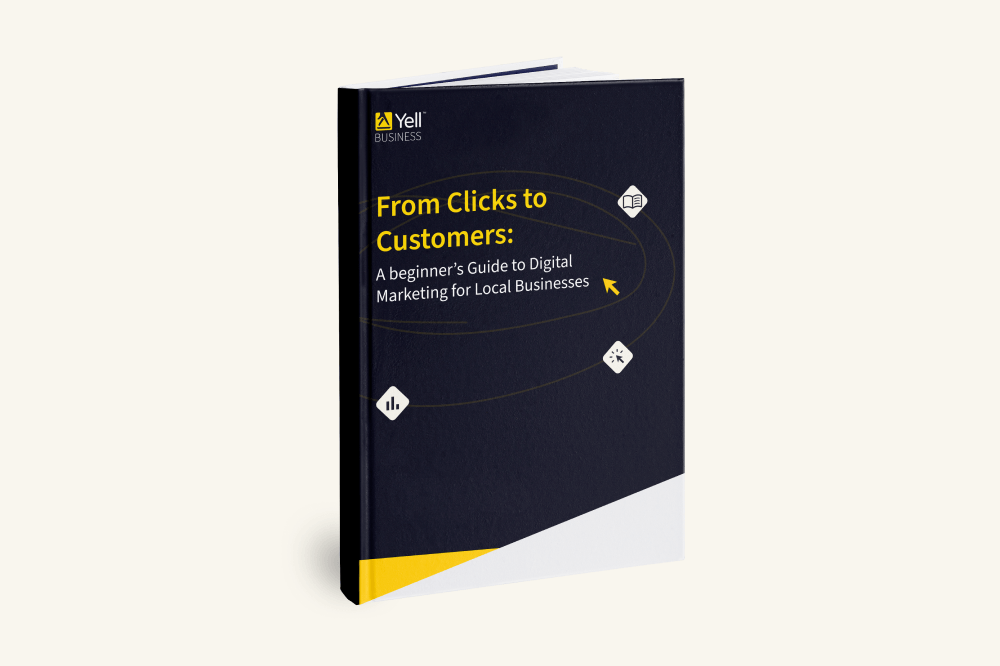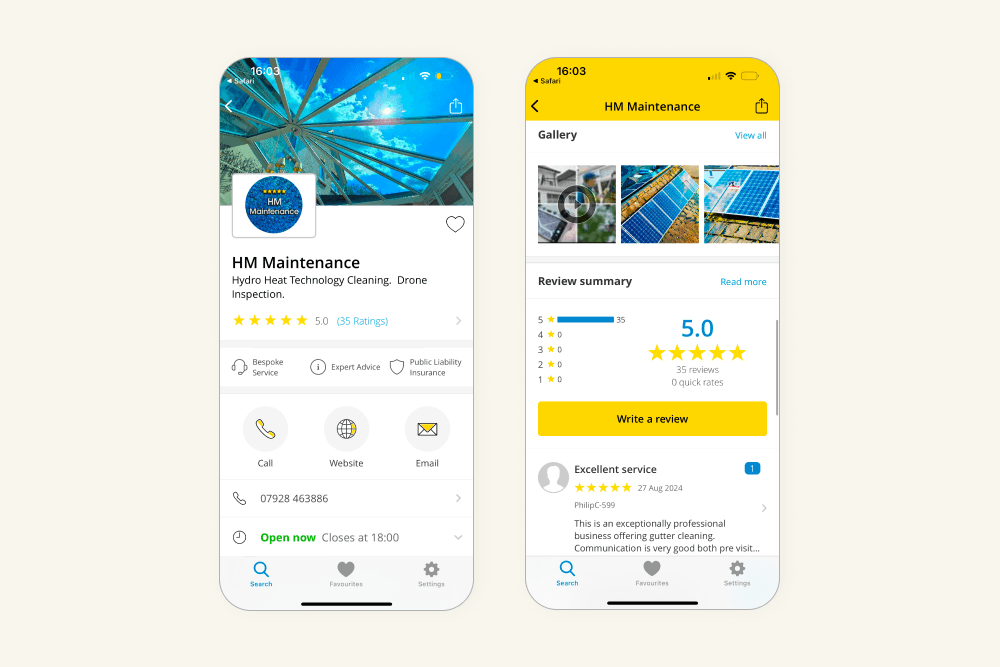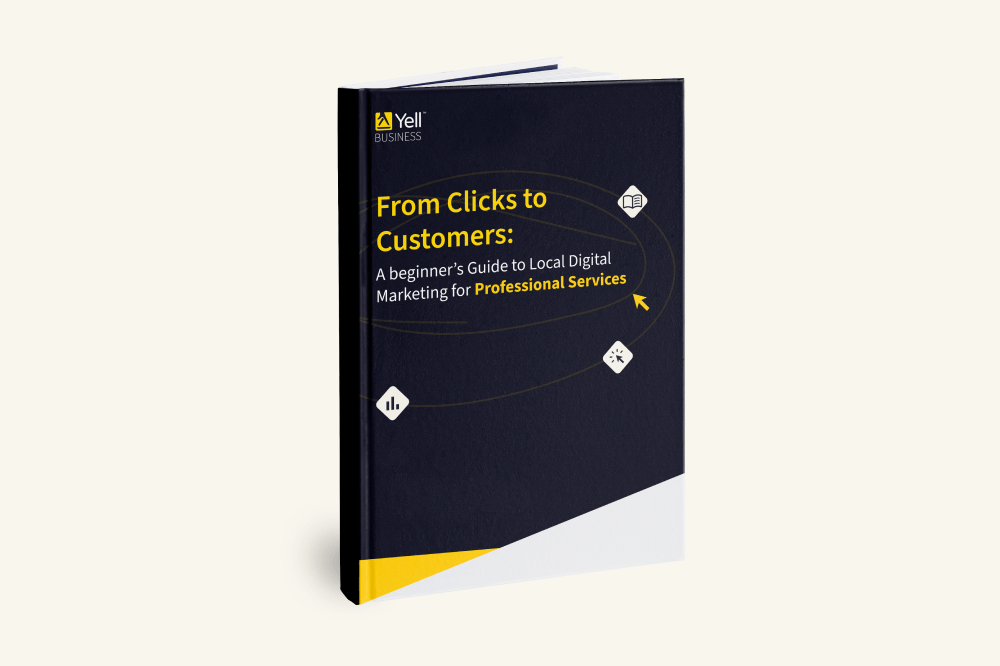The internet has become a must-have tool for just about every consumer when it comes to making decisions. Search engines like Google are the go-to source for discovering new products or brands online, with social media ads not far behind. Plus, 76% of consumers search online for a company before visiting its shop in-person, and 45% are more likely to visit a business if it has a robust online presence.
So, what does this mean for small business owners? If you’re selling online, your target audience is undoubtedly spending time on the internet every day. But even if e-commerce isn’t your focus, your customers are still online, browsing and engaging—and that’s exactly where you want to be.
Many small businesses offer great products and services but struggle to stand out. In today’s digital world, where people spend hours online each day, digital marketing is key to cutting through the noise and reaching your audience. Not connecting with them online means missing out on a major opportunity.
In this blog, we’ll walk you through why digital marketing is important for small businesses, the benefits it brings, effective strategies to try, how to put them into action and tips for budgeting like a pro.
How digital marketing helps small businesses
For small businesses, digital marketing can be a game-changer in reaching local customers more effectively. Traditional methods like TV ads and billboards can be costly, but tools like local SEO (Search Engine Optimisation), social media, and Google Business Profile help you get noticed without breaking the bank. In fact, 46% of Google’s daily searches are local, but 58% of businesses haven’t adopted local SEO.
With more people browsing online, digital marketing helps you meet customers where they already are. It’s a great way to target your audience, engage with them and use data to refine your strategies in real time.
If you’re aiming for growth, digital marketing is essential for building your brand sustainably, without the need for a big budget or complicated strategies.

Download our digital marketing guide to find the digital marketing approach that works best for you.
How digital marketing can take your business to the next level
Digital marketing offers a host of benefits, especially for small businesses that need to make every pound count. Here are some key perks:
Affordability
One of the biggest benefits of digital marketing is its budget-friendly nature. Traditional methods like print, radio and TV ads can be incredibly expensive, but platforms like Google Ads, Facebook, and Instagram let you set your own budget and only pay for the results you want (like clicks or views). This flexibility means you can scale your efforts as your business grows, making digital marketing a far more cost-effective way to expand your brand.
Lead generation and conversion
Turning leads into paying customers is crucial for any business. By tracking cross-channel interactions, gathering insights and fine-tuning your messaging, digital marketing helps you generate quality leads more efficiently. Tools like landing pages, email campaigns and retargeting ads are ideal for turning casual browsers into loyal buyers.
Wider audience reach
Gone are the days when small businesses were limited to just their local customer base. Digital marketing enables you to connect with potential customers both near and far. Take, for example, a small exterior cleaning firm based in Scotland that expanded its reach across the entire country and into northern England by focusing on digital marketing.

Whether through social media, paid ads or SEO, you can reach customers in your community, across the country, or even globally. This broadens your opportunities while ensuring you’re visible to local customers actively searching for what you offer.
Brand awareness
Building brand presence is vital for small businesses, and digital marketing makes it much easier. In fact, 43% of small business owners find digital marketing most effective for enhancing brand awareness. Strategies like content marketing, SEO and social media help you consistently reach new customers and keep your brand top of mind. This increases your chances of standing out, staying memorable and growing sustainably.

Explore our guide for real-world digital marketing examples tailored to small businesses.
How to build an effective digital marketing strategy
While there’s no one-size-fits-all solution for digital marketing, several proven strategies can help small businesses achieve the best results:
Content marketing
Start by creating valuable, engaging content like blogs, videos, or social media posts. This helps build trust with your audience, supports SEO, and drives conversions.
SEO
In the UK, 90% of adults use search engines. However, with 64% of small businesses having a website, standing out online can feel like a daunting challenge. This is where SEO comes in. By optimising your website and content to rank higher in search results, you can increase organic traffic without ongoing ad spend. For instance, by optimising their website to improve visibility, Universal Martial Arts, an independent studio, secured a spot on Google’s first page for every class and generated 300+ leads. See how
Pay-per-click advertising (PPC)
Run targeted ads on platforms like Google or social media. You only pay when someone clicks, so it’s a great way to drive immediate traffic and track ROI. Take this independent 4×4 car dealership, for example: By running targeted paid ad campaigns aimed at ready-to-buy customers in their local area, they achieved a higher return on investment and generated 128+ leads. Read their story
Social media
Use platforms like Instagram, Facebook, and LinkedIn to share content, run ads, and engage with followers. With approximately 5 billion users (64% of the global population) spending an average of 2 hours 21 minutes daily on social media, it’s an incredibly powerful tool to connect with customers. Plus, 55% of consumers discover new brands through social media platforms. So, regular posting and real-time interactions can really help build authentic connections and boost brand visibility.
Email marketing
Keep your audience engaged with personalised email campaigns. Share updates, promotions or discounts to nurture relationships and drive sales. With 75% of consumers confirming it’s their preferred channel to hear from brands, it’s a cost-effective way to stay connected with customers.
By experimenting with and fine-tuning these strategies, you can create a powerful digital marketing presence that draws in, converts, and keeps customers coming back.
How much should a small business spend on marketing?
Budgeting for digital marketing can vary depending on the size of your business and your goals. A general guideline is to allocate around 5-10% of your revenue to marketing efforts, with a portion dedicated to digital marketing. The exact amount will depend on your industry, competition and growth objectives.
Digital marketing is often more flexible and scalable than traditional marketing. You can start small with a modest budget, test different campaigns and increase your spend once you see results. Just remember to factor in costs for tools, software or hiring experts to help with things like SEO or content creation.
Get set for success with digital marketing
For small businesses looking to grow and stay sustainable, digital marketing is a must. It provides affordable ways to reach a bigger audience, generate leads, build brand awareness and track how well you’re doing.
Strategies like SEO, content marketing, PPC, social media and email marketing allow you to connect with customers in meaningful ways and set yourself up for long-term success. With the right approach and a bit of patience, you will see how digital marketing helps small businesses win new customers and stay competitive.






